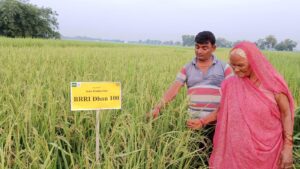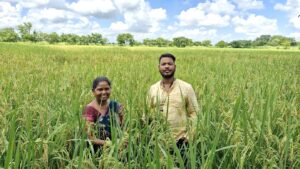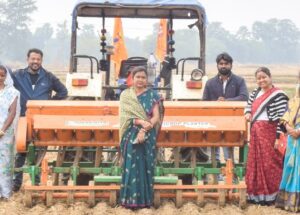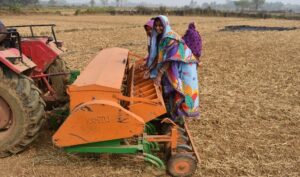
Norman Borlaug received the Nobel Peace Prize in 1970, about 25 years after he began working to increase food production in Mexico. He received the Prize at the midpoint of his career. Before then and since then, he has endured much and accomplished much, and he continues, working every day, traveling around the world, pursuing his mission, inspiring each of us by his very presence.
His life is a story of hard work, determination, persuasion, persistence, and passionate dedication to help farmers produce more abundant food for others and provide better lives for themselves. As Newsweek recently reported (20 July 2007), only five people have been awarded the Nobel Peace Prize, the Presidential Medal of Freedom, and the Congressional Gold Medal—Mother Theresa, Nelson Mandela, Martin Luther King, Jr., Elie Wiesel, and Norman Borlaug. Norm shares many characteristics with the other four: self sacrifice, dedication, patience, vision, and compassion.
Early years
Born at the beginning of the First World War, Norm learned his early lessons at a one-room school in Howard County, Iowa. Growing up on the family farm, he came to know the value of hard work and clear goals. More importantly, in his own words, he came “to know right from wrong from his parents, grandparents,
and neighbors.”
Norm was a teenager during the Great Depression in the U.S., and one can only imagine the courage and determination it took for him to leave the farm during the depths of that depression and come here to the University of Minnesota, where he would earn his bachelor’s, master’s, and doctoral degrees.
 It must have been during his formative years at the University that he came to recognize the power of science to address the practical problems of farmers. After a brief time with the Forest Service, he decided to continue his education as a graduate student under one of the giants in plant pathology, Professor E.C. Stakman. The influence Stakman had on Norm is hard to overstate. Especially memorable was a 1938 lecture where Stakman characterized wheat rust as “a shifty, changing, constantly evolving enemy.” That view of wheat rust has stayed with Borlaug to this day.
It must have been during his formative years at the University that he came to recognize the power of science to address the practical problems of farmers. After a brief time with the Forest Service, he decided to continue his education as a graduate student under one of the giants in plant pathology, Professor E.C. Stakman. The influence Stakman had on Norm is hard to overstate. Especially memorable was a 1938 lecture where Stakman characterized wheat rust as “a shifty, changing, constantly evolving enemy.” That view of wheat rust has stayed with Borlaug to this day.
After obtaining his doctoral degree with Professor Stakman, Norm took a job as a microbiologist with DuPont. But, after a few years, he had the opportunity to join one of the first international agricultural development assistance programs—The Rockefeller Foundation Program in Mexico.
With the encouragement of U.S. Vice-President Henry Wallace, in 1940,the Foundation entered discussions with the Mexican government and sent three distinguished professionals to review their agricultural situation. Professor Stakman, with Professors Richard Bradfield of Cornell University and Paul Manglesdorf of Harvard, spent more than 2 months roaming over thousands of miles of highways and byways in 16 of Mexico’s 33 states, seeking to understand the situation and how the Foundation might help. The essence of their recommendation was that the Foundation should send a team of scientists who would work with the Mexican agricultural ministry to breed better plant varieties, improve soil and crop management, and increase livestock productivity. J. George Harrar, another University of Minnesota plant pathologist, who later became the Foundation’s president [and a co-founder of IRRI], was selected to head the team. Norm was invited to join him.
Thus, Norm began the first phase of his life’s work.









